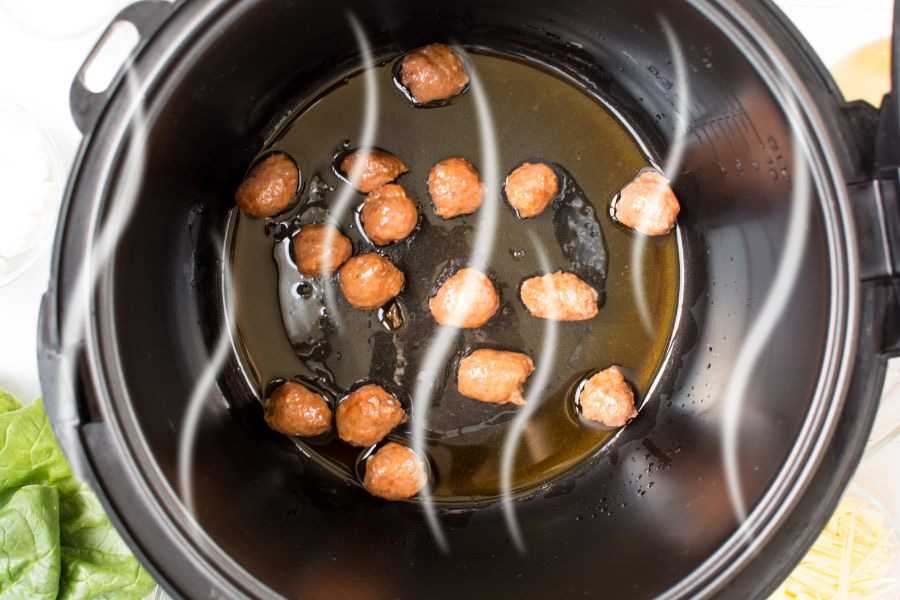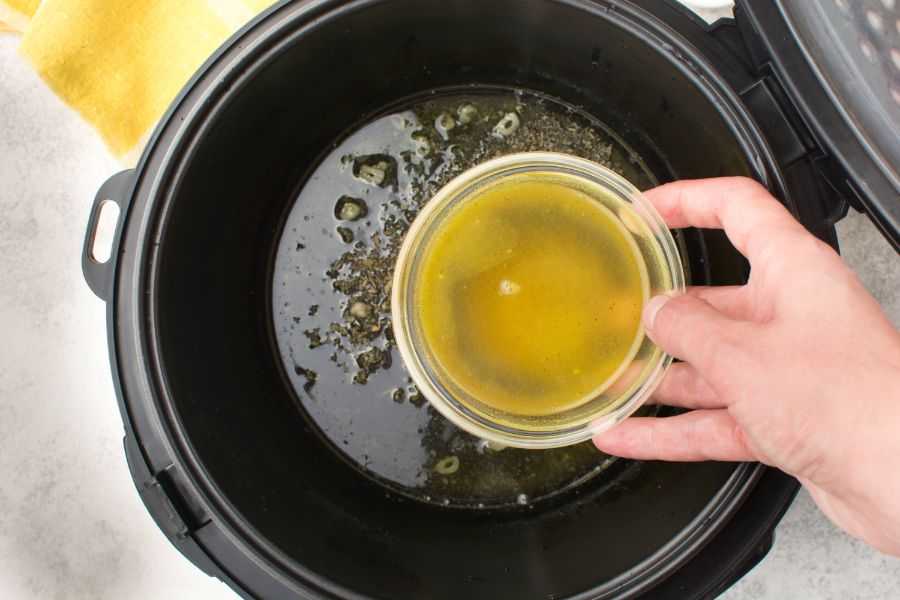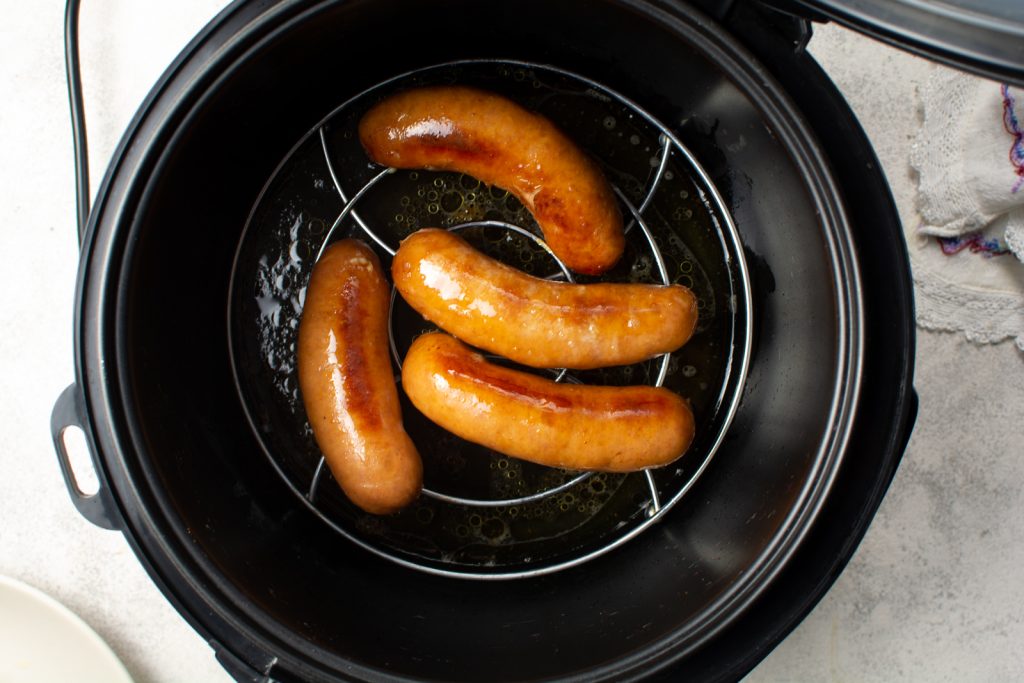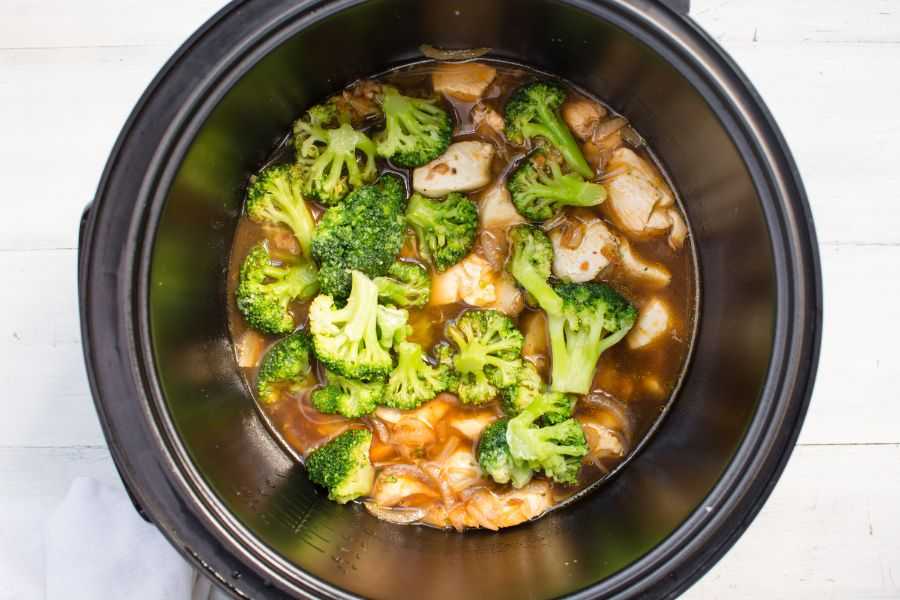As I stood in my kitchen watching my pressure cooker lightly hiss at me while cooking my corned beef under full pressure I couldn't help but wonder: "How hot does a pressure cooker get anyway?"
I'm assuming you've got a similar story.

Since that moment I've learned a lot about pressure cooking so please, let me share with you my vast knowledge.
Table of Contents
- What is the Temperature in a Pressure Cooker at Full Pressure?
- How Does the Instant Pot Work?
- What Temperature Do Pressure Cookers Cook at in High Altitude?
- If the Temperature Isn't Much Higher than Boiling Then Does Pressure Cooking Really Save Time?
- Does Pressure Cooking Really Save Energy if it Cooks at Such High Temps?
- Yes, But How Hot Can a Pressure Cooker Get?
What is the Temperature in a Pressure Cooker at Full Pressure?
To answer your questions in the most succinct way possible I'll say that the temperature in a stovetop stainless steel or aluminum pressure cooker can max out around 250 degrees Fahrenheit.
This temp is only achieved when the Instant Pot is operating at peak pressure of 15 psi at sea level.
Yes, you heard me right. Please let me explain.
However, first you need to understand how a pressure cooker works.

How Does the Instant Pot Work?
Instant Pot, just like any other pressure cooker is essentially nothing more than a standard pot, with one very big difference. A pressure cooker has a lid that seals steam inside the pot.
Unable to escape, the steam continues to build pressure and more steam is added from the boiling process that continues inside the pot. The rise in temperature directly corresponds to the rise of pressure from the buildup of steam. This speeds up the process of transferring heat to the food. Any cooking that employs the process of cooking food through steam or boiling is known as wet cooking.
American manufactured pressure cookers are designed to reach 15 psi (pounds per square inch) while European models are measured differently, comparatively, they reach up to 14.5 psi. If you run across a model that does not have the UL standard of 15 psi, it is considered a non-standard pressure cooker.
Stovetop vs electric pressure cookers may be a bit different too. Electric pressure cookers tend to operate at a more even level of pressure from the beginning to the end of the cycle but the level is usually a bit lower than stovetop models. 12 PSI would be a good ballpark average for operation pressure of an electric model - this would correspond to around 240 degrees instead of 250.
For a specific example the Instant Pot operate at 11.6 PSI cooresponding to an internal temp maximum of 242 degrees.

What Temperature Do Pressure Cookers Cook at in High Altitude?
Things continue to get hairy when you start converting your temp by altitude. Water boils at 212 °F at sea level only and roughly 2 degrees less for every 1000 feet up you go.
As an example Denver, CO is at approximately 5000 feet and water boils there at only 203 degrees Fahrenheit. That means a pressure cooker will operate at a lower temperature there. That's why as altitude increases (even with a pressure cooker) the cooking time must also increase to compensate for the lower internal temp.
Here is a link to a fun chemistry discussion on this very topic. http://chemistry.stackexchange.com/questions/47981/pressure-cooker-at-high-altitudes-and-low-altitudes
That would mean an electric pressure cooker running on high could actually only be running an internal temperature of around 230 degrees in Denver.
If the Temperature Isn't Much Higher than Boiling Then Does Pressure Cooking Really Save Time?
The time saved by cooking with a pressure cooker is drastic even when cooking in an electric pot at high altitudes.
With an ordinary pot, risotto takes about 25 minutes and is one of the most difficult dishes to master. However, cooking risotto in a pressure cooker only takes about 10 minutes, and you don't have to do anything more to it than serve it when it's ready.
A succulent roast that is melt in your mouth and fork-tender usually takes about 1.5-2 hours depending on your cooking method, and roasts tend to turn out dry or tough.
Alternatively, you can achieve better results with a crock pot, or slow cooker, but it takes about 8-10 hours. A pressure cooker can deliver a moist and tender roast in about 30 minutes.
The pressure cooker effectively doubles the atmospheric pressure of your surrounding location so relative to your given altitude or setting the cooker will cook much faster than traditional methods.
One thing to keep in mind is pressure cooking in high altitudes affects overall cooking time. A good general rule to follow is to cook your food about 5% longer for every 1,000 feet after the first 2,000 feet above sea level is counted. For example, if you are at 3,000 feet, you would cook your food for 5% longer, if you are at 5,000 feet, you would cook your food 15% longer, and so on.
And using an electric pressure cooker you would likely add a bit more time to the recipe. You would have to check your model instructions for it's specific conversion as they are all a bit different.
All of this should be thouroughly considered when you are buying an elctric pressure cooker. They will speed things up and make your cookign a bit more hands off much like a slow cooker does but you will have to consult conversion charts and do some math in your head. In my article Is the Instant Pot Worth It this point should be considered.

Does Pressure Cooking Really Save Energy if it Cooks at Such High Temps?
A pressure cooker also reduces how much energy is used to cook, making it a more environmentally friendly choice. Newer generations of pressure cookers save up to 70% energy consumed compared to traditional methods of cooking.
If you use a gas stove or an induction cooktop, you save more energy than an electric stove, but the less energy you use, the more money you save on utility bills. Pressure cooking is the fastest, easiest and most cost-effective method of cooking.
Yes, But How Hot Can a Pressure Cooker Get?
Now that you know the basics (and maybe a bit more) of how a pressure cooks, you can understand how hot a pressure cooker gets under normal circumstances.
Due to the buildup of steam and pressure, pressure cookers can get hotter than boiling water. In a conventional pot using a standard stove top, water can never get above boiling temperature, or 212 degrees Fahrenheit, no matter how high you turn up the burner or flame. However, with a pressure cooker, it can reach 250 degrees Fahrenheit when at its highest pressure setting of 15 psi, which also aids in reduced cooking time.
Pressure cooking is fast, easy, economical and convenient. It also doesn't take as long to master as other methods of cooking.
Question : For a Pressure Cooker is it all about getting the water up to 250 to kill botulism. Or does it have to do with the pressure also. Example PC gets up to 250 to can. Turkey Fryer get to 250 but not pressurized. Would these equal out for Canning?
Where do you live that's 7500 ft ?
Since I need to cook certain foods up to certain temperatures in order to stay healthy it is important for me. I live at 7500 ft altitude. Depend on my pressure cooker. Foods change their health benefits at different temps. Can get better or worse. And altitude makes a BIG difference in cooking temp. Really enjoyed this set of replies, very informative. Have been considering getting an instapot.
After reading all the comments I now know less than I did before LOL.
Haha! It is complicated. Luckily using your pressure cooker and it's built in settings doesn't need to be so complicated 🙂
It's the weight plus the pressure difference times the cross section that the stream must overcome. Both arguments are partially right.
The larger the weight and the smaller the hole, the less impact on cooking times proportional to altitude. I'm guessing that most of these pressure cookers are using nearly identical weights and vent sizing, so the altitude cook time variation should be the same regardless.
It's important to note that if the pot is designed to reach pressure without venting because of precise temperature control, such as with the instapot, cooking time will be the same regardless if you are in the vacuum of space (assuming you aren't in free fall) or the deepest ocean (assuming the pressure cooker could survive).
The vent is primarily there as a safety on such devices and to regulate pressure regardless of excessive energy being applied to the system in stove top devices. The vent also brings the added benefit of allowing rapid cooling should I've desire to manually vent the cooker. Remember PV=nRT. The volume is constant, and we want the max pressure constant for safety. R is just a constant, so we can ignore that. So we are left with nT being a constant.
How is that possible if the number of molecules is constantly decreasing through the vent? Because they aren't. n going out is equal to n being added through a phase change in the remaining liquid water.
If the cooker dries out, the pressure and temperature drops until the weight is no longer lifted, though you'll likely burn the bottom of your food through conductive heating.
Lastly, stream is not an ideal gas, and there is exponentially increasing resistance to flow through the stream vent with linear increases in flow rate--so pressure and temperature can exceed the ratting of the cooker if enough power is applied--with the vent fully functioning--but your stove can't generate that much power.
The question is: does the wobble weight keep a pressure relative to outside pressure, or is it an absolute pressure relative to the weight's downforce? I think it is mostly (like 99%+) the latter.
No. Think of it in terms of relative pressure. If the pressure is the same inside and outside of the pressure cooker, then the weight is not lifted by the pressure at all. If the pressure is greater inside, there is a force lifting the weight.
The regulator weight starts to rock and lose pressure through the vent hole when the upward force on the weight is greater than the regulator weight. The upward force is proportional to the difference in pressure inside minus the pressure outside the pressure cooker.
Also, the upward force is equal to the cross-section area of the vent hole times the difference in pressure.
For example, if the difference in pressure is 1/2 an ounce per square millimeter, and the cross-section area of the hole was 3 square millimeters, the upward force would be 1.5 ounces and would push open the hole for any weight that is less than 1.5 ounces.
This will make sense if you think about it. If you had a pair of vent holes with the same cross-section area, the upward force on a weight covering the pair of vent holes would be twice as much as the upward force of one vent hole the same size as either of the two vent holes.
But if the total cross-section area of a larger vent hole is the same cross-section area as the combination of a pair of vent holes, both configurations would each have the same upward force. So the upward force is clearly proportional to the cross-section area.
Considering both Dave's and John's comments above, it might help determine who is more correct by noting that the USDA pressure canning tables hold processing time constant but vary the pounds pressure required depending on altitude for safe canning. For instance, at sea level, a pint of pinto beans requires 30 minutes of processing time, at 11psi at sea level, or 12psi between 2000-4000 ft, or 13psi between 4001-6000 ft, or 14psi between 6001-8000 ft. to reach 121C (250F) for the duration needed to kill botulism spores. So, with processing time held constant, the higher the altitude the more pressure is needed inside the pot to reach the desired temperature. Conversely, if pressure is held constant (and we are NOT talking about safe pressure canning here!) and you want to cook a raw chicken for supper in your pressure cooker, then if you live at 5000 ft. altitude, your cooking time will be longer than if you live at sea level because the temperature inside the pot will be lower than it would at sea level.
If you're using a traditional pressure cooker with lifting weights that hiss and wobble when pressure is reached - read on.
A higher altitude causes a lower atmospheric pressure and it is this lower atmospheric pressure that lowers the boiling point of 'open water' - eg in a saucepan.
The pressure generated inside a 'weight operated' pressure cooker is determined by the steam pressure lifting the weight, so the internal pressure is unaffected by the external atmospheric pressure.
This means that cooking times inside this type of pressure cooker are unaffected by altitude.
The above comment is simply untrue. Altitude does affect weight operated pressure cookers. The pressure in the cooker will always be the same amount higher than the pressure outside it. It's a relative measurement. If you're atmospheric pressure is only 10 PSI because you're at altitude and your cooker has the weights set to open the valve at 15 psi, your absolute pressure inside the cooker will be 25psi. At sea level, around 14.7psi, you would have 29.7psi.
You could theoretically tune the weights for your altitude if your pressure cooker has an adequate safety margin for the increased relative pressure.
My guess is that all pressure cookers including instapots are made for sea level altitude. I've been cooking with a pressure cooker for years, lived at 7500 ft for 40 years. I have a weight on top of pressure cooker. I'm assuming max temp inside my stainless steel cooker is much less than in a pressure cooker at sea level.